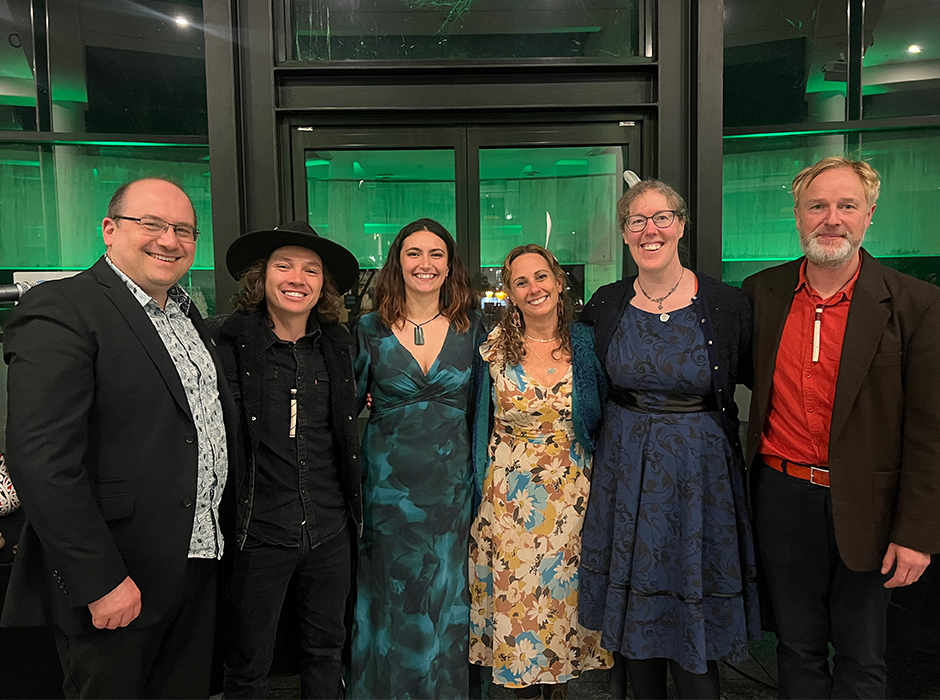
At the opening of Hou Rongo (from left), Professor Steven Mills, Moriori musicians Ajay Ataea and Jakana Lanauze Phillips, Dr Gianna Savoie, Associate Professor Jennifer Cattermole and external collaborator Alistair Fraser. Photo: Steve Ting
Transporting visitors to Rēkohu (Chatham Islands) and the culture of the indigenous Moriori people, the exhibition Hou Rongo: Moriori, Music and Manawa – A Multisensory Experience is currently on display at Tūhura Otago Museum through 27 October.
Developed with the support of a MBIE Smart Ideas Grant in 2022, project lead Dr Gianna Savoie (Science Communication and Centre for Sustainability) says the mahi began in 2020.
What started as an idea to create playable 3D-printed replicas of the only two known miheke oro (Moriori flutes) in the world - one from the Canterbury Museum and the other from Hawaii’s Bishop Museum - expanded into a much larger kaupapa to share and celebrate the story of Moriori culture.
Gianna explains the project is the first to combine Totohungatanga Moriori with innovative technology as a tool to revitalise Moriori culture.
“As you can imagine, putting a magnificent puzzle like this together takes a huge amount of collaborating, innovating and iterating,” Gianna says. “We employed technology such as CT scanning and 3D fabrication, filmmaking, music composition and sound-design, photogrammetry, wind and scent reconstruction, and interactive media.”
Developing Hou Rongo in partnership with Hokotehi Moriori Trust, the interdisciplinary project has involved the expertise of many academics, and in particular Associate Professor Steven Mills (Computing), Professor Nancy Longnecker and Teaching Fellow Steve Ting (Science Communication) and Associate Professor Jennifer Cattermole (Performing Arts).
Guy Frederick, Communication Adviser Sciences, caught up with Gianna for some behind-the-scenes insights of bringing Hou Rongo to life.
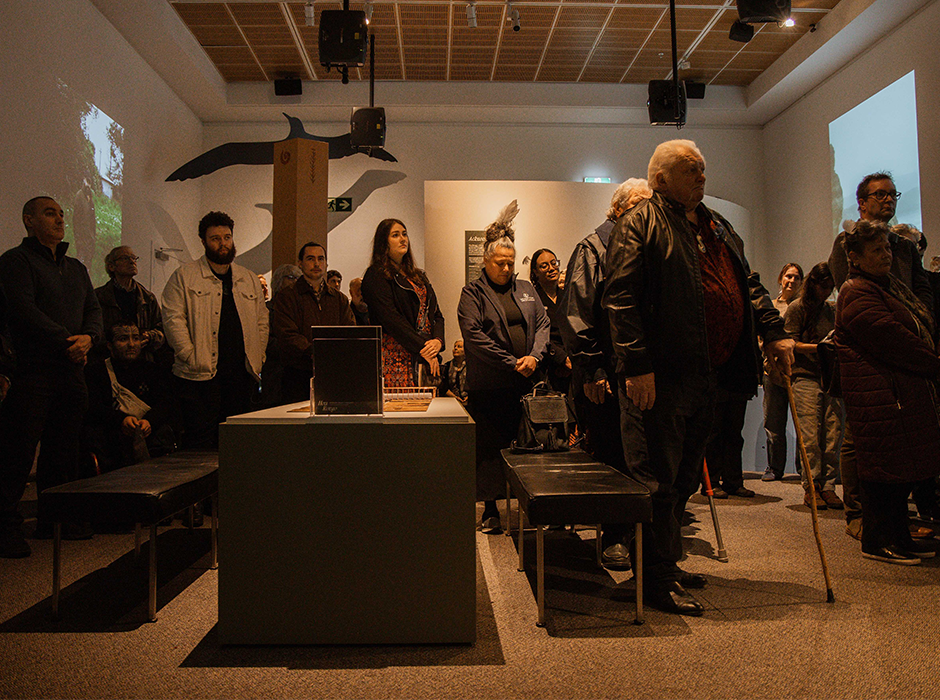
At the launch of Hou Rongo included over 60 Moriori from Rēkohu, the North and South Islands and overseas, attended the launch of Hou Rongo. Photo: Ashleigh Ryan
What was your vision for the project?
The main kaupapa of this project was to shine a light on contemporary Moriori culture in an incredibly engaging way. Our goal for this project was not to delve into the past and focus on the damage done to this culture, but instead to illuminate who these people are today – a vibrant, contemporary, thriving community with their own specialised culture, traditions, language and rongo (music and stories) - all of which were on the cusp of being lost and are now actively being revived.
We wanted the audience to actively engage in the result, so decided to create an immersive extended reality exhibition that transports visitors to Rēkohu and provides a multisensory experience of Moriori culture.
How long did the project take?
We talked with the Moriori community in 2020 about creating playable 3D-printed replicas of the only two known miheke oro (Moriori flutes) in the world.
But the more we spoke with our Moriori partners, the more we realised there was far more to their story to share and celebrate. When we first visited Rēkohu, it became evident just how closely tied their culture is to the environment of Rēkohu and the etchu (elements) of nature - especially that of ocean, forest and wind. We knew then that we wanted to try to create an environment where the audience could experience that connection for themselves.
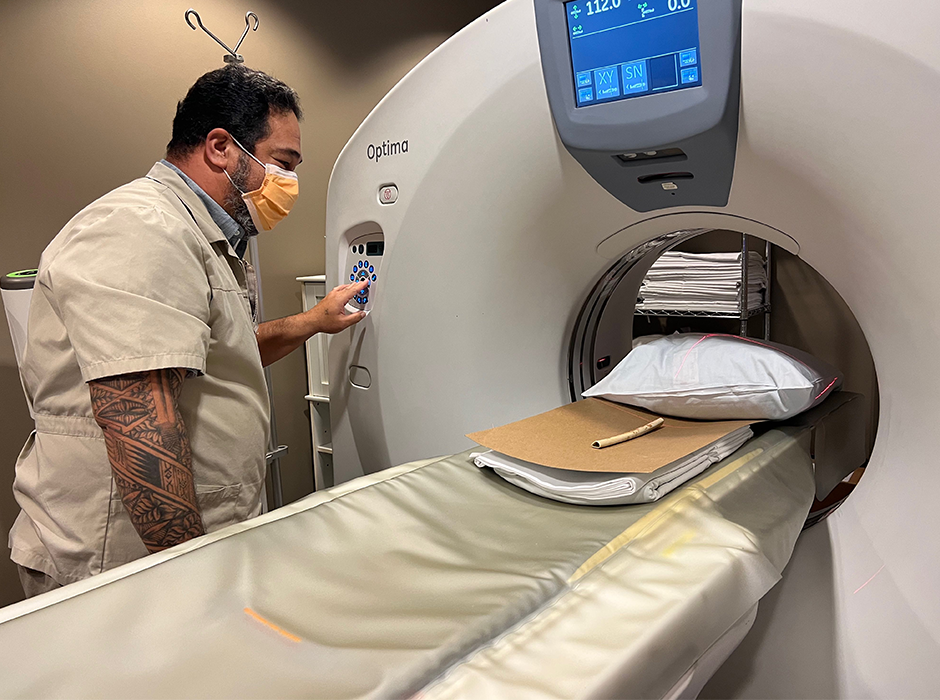
Scanning one of only two Moriori miheke oro (bone flute) known to exist worldwide at the Bishop Museum in Hawaii. Photo: Gianna Savoie
What was the strength of the multi-disciplinary approach?
Even though I’m not a musician, I’ve always viewed this project as a symphony and every person as having their own unique role in the orchestra. That said, it was clear from the beginning that our goal was to create a truly collaborative project. Though we had our own specialised areas to work on, whether it was interactive tech or fabrication, music or filmmaking, sound-design or writing, we were never siloed or competitive and everyone was encouraged to chime in, learn, and contribute. Sometimes the group dynamic just comes down to chemistry, but I think when you foster a collegial environment where everyone’s voice is heard, you create cohesion.
What was at the heart of Hou Rongo’s success?
Indigenous ways of knowing frame this project and, central to the project’s success, were the beautiful and respectful relationships formed and strengthened with the Moriori community and Hokotehi Moriori Trust in particular.
When working in indigenous spaces, it’s our role as pākehā researchers to listen first, and then contribute as a strong ally to get the mahi done. When you collaborate and co-design, especially with culture bearers who bring another way of thinking about and understanding things, whether it’s Totohungatanga Moriori or Mātauranga Māori, you add texture, colour, nuance and richness that cannot be achieved without that leadership.
We are especially grateful for the generous guidance of Deb Goomes, our team member and cultural adviser, who worked tirelessly to help shape the exhibition and ensure the cultural context was right.
How did your Moriori partners respond to the outcome?
We’ve been bowled over by the enthusiasm and positive feedback by our Moriori partners. The launch of the exhibition was also incredibly special with over 60 Moriori attending from Rēkohu, the North and South Islands and overseas. Seeing their faces light up when they saw their hunau (family) on the big screens, smelling the scent of kopi berries reminding them of home, and hearing them say how much it meant to them to have their story celebrated in this way just knocked me in the heart. I didn’t have a dry eye all night.
But the power of this project really hit us long before the launch when we were visiting Rēkohu. As a koha, we gifted some of the early printed replicas of miheke oro to the Kōpinga marae. One of our Moriori collaborators began to play one in front of the pou. It was an incredible moment because it was the first time someone of Moriori descent was able to make music from this instrument in hundreds of years! It didn’t matter that it was a replica - the sounds were the same and it carried that same manawa. And in that moment I think we all realised this project had deep and lasting impact.
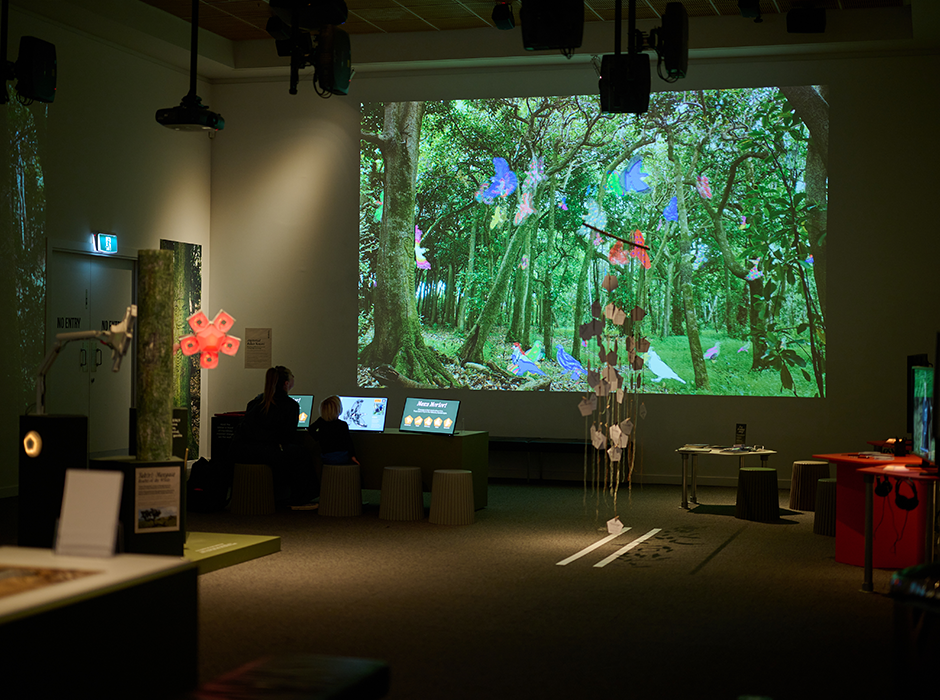
Interactive installation at the Hou Rongo exhibition on display at Tūhura Otago Museum. Photo: Craig McKenzie
Did the final exhibition of Hou Rongo reflect your initial vision?
I think the beauty of this project is that everyone came into it with their own unique vision. We all had ‘something’ in our heads based on our own experience and aesthetic sense. But through that process of co-creation, we learned so much from each other and opened ourselves to other viewpoints and approaches.
I have learned that if you approach these projects as an ally instead of an owner, with a genuine openness to listen and learn, you can build something together that is far greater than the sum of its parts - something that is beautiful, unique and lasting. What emerged was this fantastic composite that ended up being better than any of us could have imagined - an elevation of our combined vision.
How would you describe Hou Rongo’s voice and the story it tells?
Hou Rongo’s voice is that of harmony and the sense of peace that is the core principle of Moriori culture. Every experience in the exhibition draws from and comes back to that. From the community’s welcome as you step into the space - to the immersion into the sights, sounds and scents of Rēkohu and experiencing the etchu’s realms of ocean and forest, to the music and stories of the Moriori people themselves - it is the sense of peace that shines through.
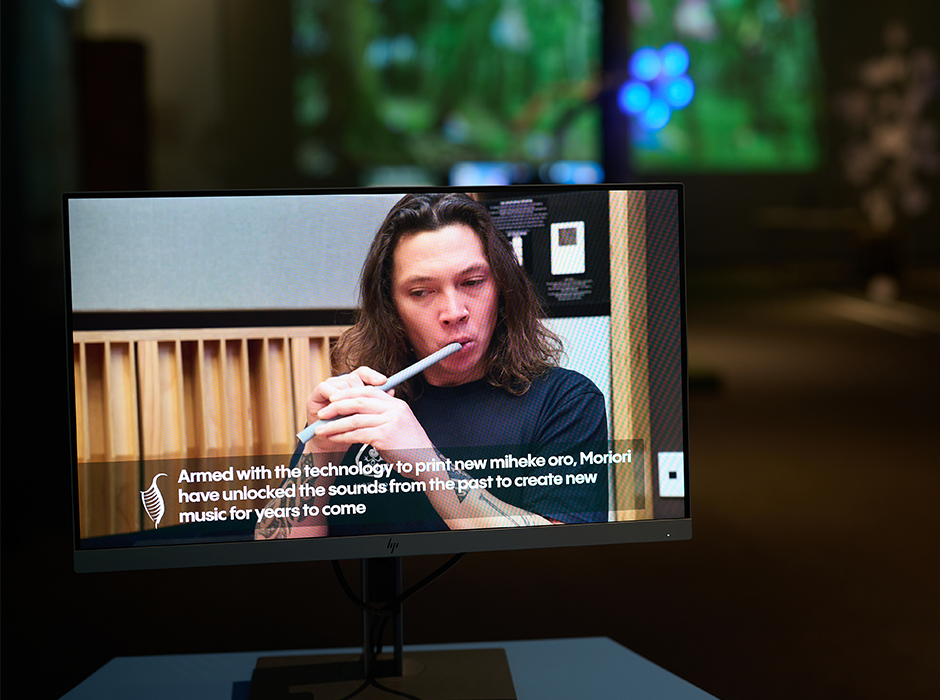
Playing miheke oro at the Hou Rongo exhibition on display at Tūhura Otago Museum. Photo: Craig McKenzie
What’s next for Hou Rongo?
We are all proud of the legacy that’s being created with this project. By producing playable 3D prints of the original miheke oro (Moriori flutes), we are helping to rekindle a lost art in terms of Moriori music that will further revitalise their culture.
This project is enabling the Moriori community to rightfully keep, use and share these treasures with others, as they will retain ownership of the scans and the ability to print more. This marriage between ancient wisdom and cutting-edge technology has, in a very real sense, spurred what I term ‘technological repatriation’ with enormous capacity to expand.
We’re now in the process of talking about where the exhibition will travel next. This is just the beginning of this mahi, which will only grow and evolve over years to come.
Hou Rongo: Moriori, Music and Manawa – A Multisensory Experience is on display until 27 October 2024 at Tūhura Otago Museum.